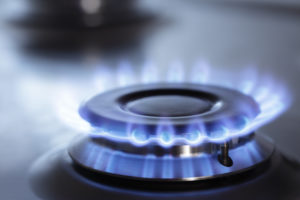 Natural gas rose on Tuesday following two sessions of losses amid cooler conditions across the northern US, but mild weather over the rest of the country capped gains.
Natural gas rose on Tuesday following two sessions of losses amid cooler conditions across the northern US, but mild weather over the rest of the country capped gains.
Natural gas for delivery in May traded 0.99% higher at $2.561 per million British thermal units at 8:40 GMT, shifting in a daily range of $2.563-$2.533. The contract tumbled 3.7% on Monday to $2.536 per mBtu following a 1.9% drop on Friday.
According to NatGasWeather.com, natural gas demand in the US will be moderate compared to normal through April 27th due to cooler conditions over the North, before those regions gradually warm up during the following seven days.
A cool blast continues to sweep across the northern US, inducing moderate heating demand as overnight lows drop in the 20s and 30s. However, this translates to only about 10 degrees below normal, thus shouldnt have much of an impact on the expected large inventory builds to come. The Great Lakes and Northeast will see scattered showers of rain, snow and hail, while Texas, Florida and the Southeast warm up this week into the 70s and 80s, and locally 90s. The countrys western regions will remain mostly mild, with some periods of cooling.
Active weather will continue to dominate the US next week as well, in a typical Spring fashion with showers and thunderstorms. Readings across the Midwest and northeastern US will remain slightly cooler than normal, while the eastern, central and western parts of the country enjoy near-seasonal weather. Warmer temperatures will gradually engulf the north-eastern US end-April and early-May.
“Overall, we consider the pattern to be slightly bearish through the rest of the month, and then more strongly so early in May as milder southerly winds arrive into the northern US,” NatGasWeather.com said.
Readings
According to AccuWeather.com, the high in New York on April 22nd will be 62 degrees Fahrenheit, 2 below usual, before easing to the mid-upper 50s and lower 60s through April 30th. Temperatures in Chicago will peak at 50 degrees tomorrow, 12 below normal, with highs set to remain in the 50s through the end of the month.
Down South, the mercury in Houston will peak at 89 degrees on April 23rd, 9 above normal, and will top 92 degrees on April 25th, before easing back to the 80s afterwards. On the West Coast, Los Angeles will see readings max out at 66-69 degrees through April 26th, followed by a warm-up into the mid-upper 70s for the rest of the month.
Inventories
The Energy Information Administration reported last Thursday that natural gas stockpiles in the US expanded by 63 billion cubic feet in the week ended April 10th, exceeding analysts’ median estimate for a 53-55 bcf gain. Total gas held in US storage hubs amounted to 1.539 trillion cubic feet, narrowing a deficit to the five-year average of 1.684 trillion to 8.6% from 10.5% a week earlier. Supplies were at a surplus of 81.7% to year-ago inventories of 847 bcf.
This Thursday’s inventory report is expected to show a larger-than-average build in stockpiles, around 90-100 billion cubic feet, as overall warm temperatures covered most of the US last week. If confirmed, this would narrow deficits below 100 bcf. The five-year average inventory gain for the week ended April 17th is +46 billion cubic feet, while stockpiles grew by 45 bcf during the comparable period a year earlier.
The following report, due out on April 30th, will likely also reflect a larger-than-normal inventory build as overall mild readings persist. The five-year average build for the week ended April 24th is +55 bcf, while supplies rose by 77 bcf during the comparable period a year earlier.
Pivot points
According to Binary Tribune’s daily analysis, May natural gas futures’ central pivot point stands at $2.555. In case the contract penetrates the first resistance level at $2.577 per million British thermal units, it will encounter next resistance at $2.617. If breached, upside movement may attempt to advance to $2.639 per mBtu.
If the energy source drops below its S1 level at $2.515 per mBtu, it will next see support at $2.493. In case the second key support zone is breached, the power-station fuel’s downward movement may extend to $2.453 per mBtu.
In weekly terms, the central pivot point is at $2.601. The three key resistance levels are as follows: R1 – $2.726, R2 – $2.819, R3 – $2.944. The three key support levels are: S1 – $2.508, S2 – $2.383, S3 – $2.290.





